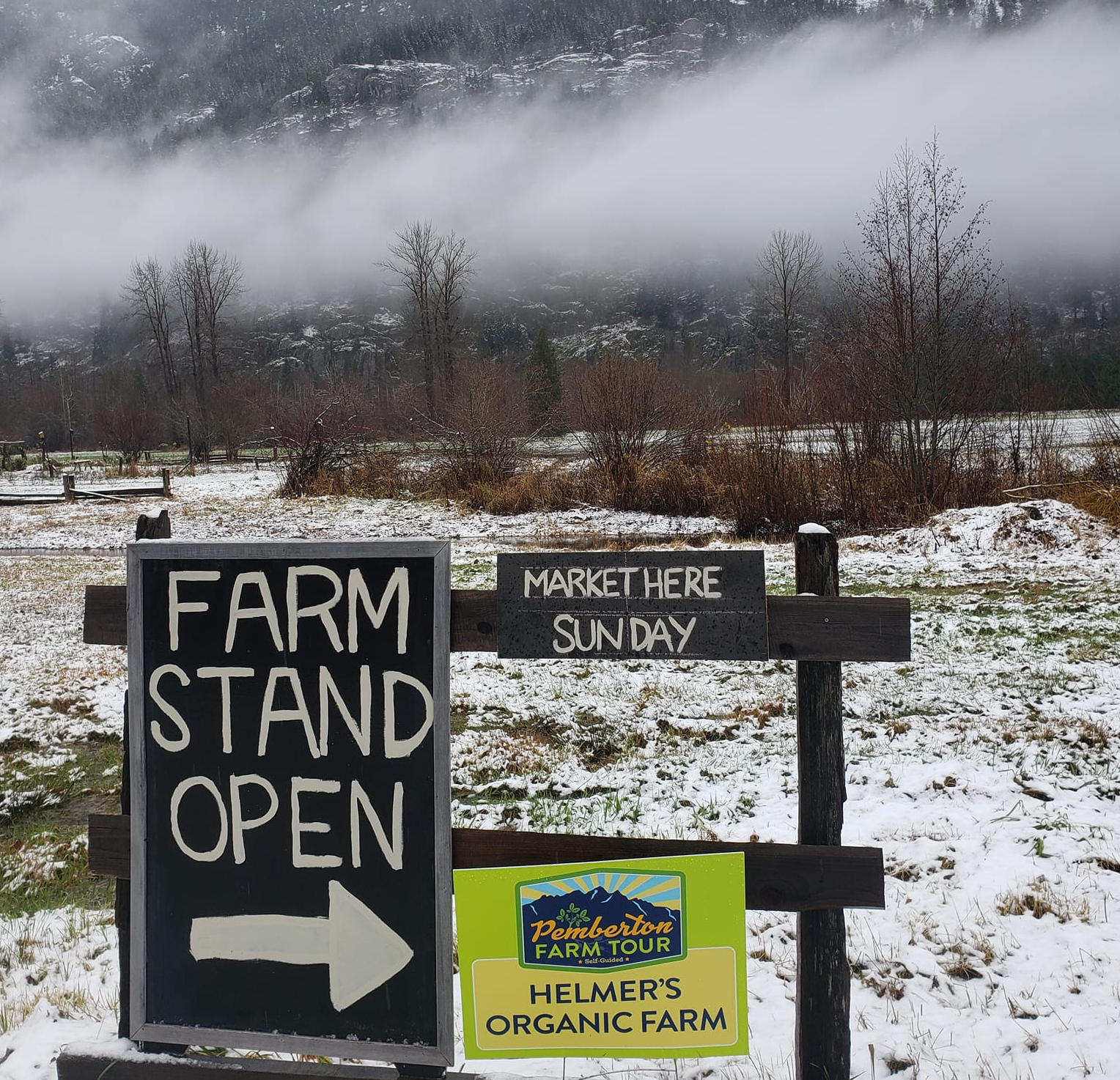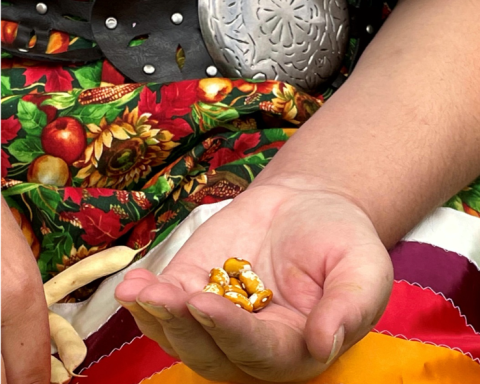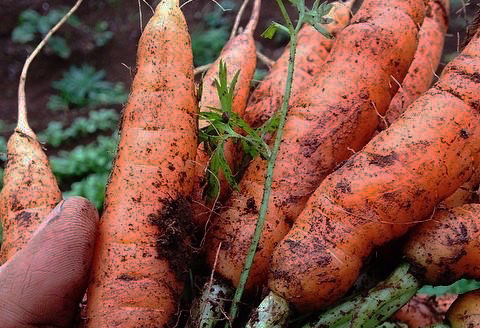By Anna Helmer
Alas, alak. Which is to say, phew. My self-celebrated cull potato Biodynamic compost pile is not available to evaluate in time for this article deadline: the snowpack beneath which it languishes lingers still. Truth be told, I am relieved. I have not been shy about leading us all to believe I am a composting genius, capable of turning old potatoes into a priceless pile of loamy soil teeming with life, energy, and spiritual sensitivity. On the other hand, it might be a pile of mucky old potatoes. I am saved, for now, from the big reveal.
This winter’s snowpack has had a more notable affect on life this winter than just preserving my pride. Most of it is from December’s excesses, when several feet accumulated in just a few days. The temperature plunged and the farm was in the proverbial grip of winter. The work focus narrowed: clear greenhouse, shovel path to chicken house, monitor the cooler temperatures, keep water pumps from freezing. As always, the first few days of minus twenty were fine, but then things started to freeze. It’s amazing how much work this becomes.
Rain is inevitable of course, which adds crushing weight to snow that was this year extra sticky, clinging even to the metal roofs of barns and homes. This became a grave concern. Not only is there the potential collapsing problem, but a very real danger to anyone or anything in the line of the sliding snow when it finally does let go.
Our farm escaped the situation with little more than one blown apart railing, one bent greenhouse rib (from a tractor-mounted snow blower injury), and a day or two of frozen water pump. It’s not hard to spot other winter casualties in the area and it is considered polite to avert your eyes and not mention it.
Meanwhile, under the snow, the soil has been hard at work. It’s hard to believe, as the landscape seems so inert in the depths of winter, but Rudolph Steiner says it’s so. This year in particular the soil seemed so remote, buried under four feet of concrete snow. A lot of the time it was a walkable snowpack and striding about the farm on an elevated even surface felt like freedom. Anyway, it was easy to assume there wasn’t much going on down there.
Biodynamically-speaking, however, winter is a time of dynamic change in the soil. I really don’t pretend to understand the technical aspects of many of Steiner’s arguments, and this one has really confused me. Something to do with the formation of crystals deep down which will collect the forces emanating from the further reaches of the universe and stream them upwards into the plants. Don’t quote me.
Obviously, there is activity. We habitually try to rotavate the next year’s potato field last thing in the fall before winter. Just a shallow rotavate, and perhaps a slightly deeper spading. It breaks up the sod that has formed over the previous five years of cover-cropping. It’s pretty rough, but in the spring, this field will dry a little quicker and much of the organic matter will have broken down. This is a sign of winter activity, isn’t it?
It’s more than that, though I am struggling to put my finger on it. My understanding was nudged along when we went to dig the equipment trailer out of the snow. We had parked it under a barn roof line. Oops. See above. It was buried early and often this winter. The extraction project took place over a two-day period and involved heavy equipment. When done, a churned-up mess of soil, snow, ice, and mud was left in its place. The ground won’t recover from that this year.
We would never do this to a field, but the message remains the same: we farmers ruin soil. The soil needs winter so it can get away from us and do its thing. If you haven’t slapped your head with understanding then I haven’t done a good job of writing, for this is very profound.
Think about the fall-rotavated potato field. It will emerge from the winter ready for an (almost) single tractor pass for final seed bed preparation. When we don’t do the fall rotavating and spading it takes several passes with disc, cultivator, spader, rotavator, and harrow to do the same job, with likely a substandard result.
The field, left alone in the grip of winter, was busy, busy, busy and did a better job of it than we could have done.
The BD500 preparation, which some call the gateway drug of Biodynamics, is buried over winter. I won’t get into the details, but it transforms from a muck of fresh manure into a dryish plug of pure power. I wouldn’t go so far as to say it makes sense, but I admit to a slight glimmer of understanding.
Now I am kind of excited to see the compost pile. I think it was always out of my hands.
Anna Helmer farms in Pemberton and is grateful for the opportunity. helmersorganic.com
Featured image: Credit: Hemler’s Organic Farm









